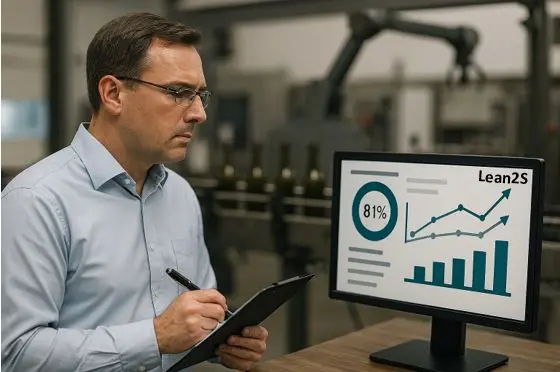Process monitoring challenges
LEAN methodology terms such as "Kaizen" (continuous improvement), TPM (equipment maintenance), etc. will not surprise you much, it is more or less applied, maybe it is just called differently. But the main idea remains - to understand what and how is happening, go to the place ("gemba") and observe.
čiaWhat monitoring shortcomings are encountered have already been mentioned in another article (hereWhat monitoring shortcomings are encountered have already been mentioned in another article), but another quite common case is employee resistance to a possible change. Have you ever stopped in production and just silently observed the process of some device or workplace? Practically, the question “What’s wrong?” arises for the person working there. And the silent thought that follows “If it’s wrong, then something needs to be changed.” And everyone “loves” changes, especially those initiated by other people.
And it’s even more difficult to correctly communicate what and how should be changed, and in addition, it is necessary to assess the effect of the changes, because very often you have to deal with the answer: “We tried it – it doesn’t work – so we work as before.” And so the unwritten rule that “the operator knows best” is established, which is not always true.

Data-driven change management
Using the Lean2S equipment monitoring system, when the process assessment is performed based on “independent” data, such situations can be resolved constructively. And especially when employees themselves see how much their actions affect the results of their work - motivation is completely different, which makes it easier to implement long-term changes by changing established beliefs.
First of all - both the employee and the manager (observer) rely on the same system data, which means that there are no differences in personal assessment or calculations.
Second - after making process corrections, practically everyone immediately sees their influence equally. And this can be observed not only at the current moment (I have often encountered such situations when, as long as you participate, they try, and then simply work as usual and simply answer that it is not better otherwise) but in the long term.
A specific example - we had to solve the problem of reducing downtime when switching from one product to another (downtime duration from 15 min. to 1.5 hours). The operator's established opinion is - "and we do everything quickly, faster is impossible". After reviewing the process and changing the actions performed by the operator and other process participants, the transition duration was reduced reduced by 3 times, and in some cases even to 0. Of course, this required the adoption of additional technical measures and changes in the raw material supply process, but when everyone was equally monitoring the data of the Lean2S equipment monitoring system and saw the result of the changes, there were no objections from either the management regarding the necessary investments or from the operators regarding a different working method.
Valdas Bindokaitis,
Change moderator